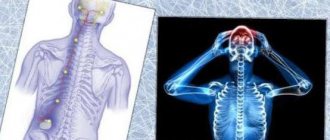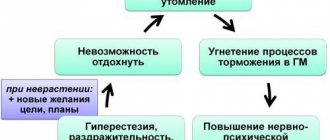Polio
— (infantile spinal paralysis) is an acute infectious disease of viral etiology, characterized by a variety of clinical forms. The causative agent is poliovirus hominis, from the picornavirus family. In most cases, it occurs with mild symptoms, when the only way to find out about the disease is laboratory testing. In special cases, the virus enters the central nervous system, where it multiplies in motor neurons, causing their death. This process leads to irreversible paresis and paralysis (1 case per 200 identified patients, WHO statistics).
The peak incidence occurs at the end of summer - beginning of autumn. Picornavirus affects children under 5 years of age. Previously, there were three types of the virus, today, thanks to vaccination, only type I remains in nature. Since 1988, the number of cases of infection in the world has decreased by 99%, but the risk of getting sick still exists. The disease continues to be reported in Africa and southern Asian countries. As a rule, this is a “wild” virus that arose in natural conditions.
Causes of polio
The virus is transmitted through household contact and airborne droplets, through unprocessed food and contaminated water. The main source of infection is a sick person. Insects can also transmit the virus. During the first days, he releases the pathogen with exhaled air, when he sneezes and coughs. Then with bowel movements, this period lasts from several weeks to months.
Picornavirus has a single-stranded RNA, size from 27 to 30 nm. Resistant to gastric juice, external environment and sub-zero temperatures. In water it remains viable for up to 100 days, in feces for up to 6 months. Concentrated chlorine preparations can inactivate the virus, kill ultraviolet radiation and a temperature of +50 C for 30 minutes. Modern antibiotics are unable to destroy the virus.
The pathogen enters the body through the nasopharynx. Initially multiplies in lymphoid tissue (tonsils). Then it enters the intestines, blood, and in especially severe cases, the central nervous system. The incubation period lasts from 3 to 35 days, after which symptoms of the disease may appear.
Risks of vaccination
With the invention of the vaccine, it was possible to save a large number of children from the disease and its complications. However, along with this, a new method of infection has emerged with a virus called vaccine-derived polio. The official name is circulating vaccine-derived poliovirus (cVDPV). For its occurrence, it takes time (about 12 months) from the moment of vaccination and certain conditions. The attenuated vaccine virus strain can be transmitted naturally from a vaccinated person to an unvaccinated person. In new carriers who have not been vaccinated, it mutates to the point that it becomes capable of causing paralysis. This can be avoided through universal vaccination.
There is a risk of developing the disease as a result of vaccination if it was carried out in a premorbid state. In an organism that is on the verge of a healthy and painful state, the protective and adaptive forces of the immune system are sharply weakened. This is the main factor in the development of poliovirus inside the body. Therefore, it is important to monitor the child’s condition before and after the vaccine, and only vaccinate a completely healthy person.
What are antibodies to coronavirus?
Antibodies (also known as immunoglobulins) are special proteins that are produced and/or produced by plasma cells.
What do immunoglobulins do?
Immunoglobulins are formed in response to foreign bacteria or viruses entering the body. They interact with the antigen (specific site of the pest) and neutralize it.
Thus, our immunity guards our health.
What classes of immunoglobulins are there?
There are 5 classes of immunoglobulins
, some of which contain subclasses.
IgA - secreted on the surface of the epithelium and present in saliva, tears, and on the surface of mucous membranes.
IgM - detected upon initial exposure to antigen.
Indicates an acute infectious process in humans.
IgG is the main class of immunoglobulins that protects against viruses, bacteria, and toxins.
IgD is found on the surface of developing B lymphocytes. The function is not installed.
IgE - secreted during an immediate allergic reaction.
Classification
According to the clinical course, polio is divided into two forms: without damage to the central nervous system (viral carriage and abortive, i.e., mild disease). Based on severity, they are divided into mild, moderate and severe forms.
Poliomyelitis, which affects the central nervous system, is divided depending on its nature into the following types:
- Spinal poliomyelitis - high fever, flaccid paralysis of the limbs, neck, diaphragm, torso, muscle spasms, headaches, hypoxia and hypercapnia.
- Pontine - paralysis of the facial nerve with obvious asymmetry, inability to completely close the eyelids, loss of facial expressions and drooping of the corner of the mouth on one side of the face.
- Encephalitic - signs of brain damage, namely confusion, convulsions, coma. It occurs extremely rarely and can lead to autonomic dysfunction.
- Bulbar - disturbances in speech, swallowing, breathing, and cardiac function. With paralysis of the intercostal muscles and diaphragm, artificial ventilation is necessary. If cardiovascular failure occurs, the patient's risk of death is high
Mixed forms are often found, in which several parts of the nervous system are affected. These include bulbopontospinal, pontospinal and others.
Tips for parents
If a child often has allergic reactions or is allergic, then vaccination is possible only during the period of remission. There is no need to use any medications before administering the vaccine.
If your child experiences the following symptoms after vaccination, you should consult a doctor:
· appearance of signs of acute respiratory infections (runny nose, cough, etc.);
· dysfunction of the gastrointestinal tract;
· shortness of breath, decreased muscle tone of the limbs.
We are talking about signs of vaccine-associated polio, which may appear 4-30 days after OPV administration. A visit to the pediatrician is necessary if there is an irregular heartbeat, urticaria or severe headaches.
After vaccination, it is recommended to avoid visiting crowded places. The child should be given more purified water to drink, and allergenic foods should be excluded from the diet.
Symptoms of polio
Manifestations of the disease are directly related to the localization of the virus and the severity of damage to the body. According to official world statistics, about 95% of cases are asymptomatic or with minor pharyngitis and gastroenteritis.
General symptoms include:
- Temperature rises to +40 C.
- General malaise, weakness.
- Loss of appetite, nausea, vomiting.
- Pain in muscles, throat, head.
- Runny nose and cough.
In the non-paralytic form of the disease, the symptoms gradually weaken and disappear completely after 1 - 2 weeks. Paralytic form, the most severe, dangerous to health and life (the remaining 5% of cases). At the beginning, the disease has similar symptoms. Only, unlike non-paralytic polio, they do not go away, but intensify. These are accompanied by symptoms such as:
- Emotional instability, anxiety, irritability.
- Rigidity (numbness) in the muscles of the back and neck.
- Leg pain.
- Involuntary contractions of muscle fibers without subsequent movement.
- Sensitivity disorder, tingling sensation, goosebumps.
Symptoms may vary depending on the form of polio, the severity of the course, and the presence of concomitant diseases. For example, pathological processes in blood vessels and perivascular spaces lead to the appearance of a rash. Myocardial damage leads to significant fluctuations in blood pressure. Damage to motor muscles and centers first causes atrophy, and then paresis and paralysis.
Decoding the results of the test for antibodies to coronavirus
How to decipher a qualitative coronavirus antibody test
| Yes/No | Ig G (Eat) | Ig G (No) |
| Ig M (Yes) | 1 option | Option 2 |
| 5-10 weeks have passed since infection. IgM is still present in the blood, but IgG is already being formed | Acute phase of the disease. 1-3 weeks have passed since infection | |
| Ig M (No) | Option 3 | Option 4 |
| Several months have passed since the illness. You may have had the disease asymptomatically | You have not encountered any viruses or no more than 7 days have passed since infection |
Antibodies to coronavirus - table with interpretation of results
In the 2nd and 4th version
(if there are suspicious symptoms), it is recommended to take a PCR test for coronavirus to identify the pest.
The complete absence of immunoglobulins may also mean that:
1) The preparation conditions were not met and the result was distorted
2) The symptoms of influenza or ARVI were similar to the symptoms of coronavirus,
3) The patient suffered a mild form of the disease and did not develop antibodies.
4) The patient suffered a severe form of the disease, and the antibodies quickly disappeared.
Diagnostics
In the preparalytic stage, it is quite difficult to suspect polio. Often, the doctor mistakes the disease for the flu, acute respiratory infections, ARVI, intestinal infection or serous meningitis. To diagnose polio, it is necessary to undergo laboratory tests, identify significant symptoms, and establish an anamnesis.
The biomaterials for analysis are: blood, cerebrospinal fluid, nasopharyngeal mucus, feces.
Basic laboratory tests:
- Isolation of poliovirus from nasopharyngeal mucus and/or feces.
- An enzyme-linked immunosorbent assay aimed at detecting IgM antibodies.
- Test for complement fixation reaction (increase in antibody titer in paired sera).
A lumbar puncture of cerebrospinal fluid may be performed. The pressure under which it flows, the level of transparency, the proportion of protein and glucose are assessed. Inflammatory changes in the cerebrospinal fluid are characteristic of paralytic forms. The normal composition is preserved in pontine and mild spinal forms.
Analysis of blood pH (acid-base balance). A decrease in pulmonary ventilation is characterized by a decrease in blood oxygen saturation (hypoxia) and the removal of carbon dioxide (hypercapnia). As a result of respiratory disorders, the pH of the blood changes, which leads to acidosis or alkalosis.
Normally, the pH of venous blood is 7.34 - 7.43, arterial from 7.38 to 7.46. When carrying out the analysis, the following is determined:
- blood oxygen saturation level (O2);
- carbon dioxide (CO2) content;
- alkaline reserve (blood bicarbonate).
An increased carbon dioxide content above 70% and a decrease in blood oxygen saturation to 90% and below are direct indicators for artificial ventilation.
Instrumental diagnostics
Electromyography can confirm the presence of lesions in the anterior horns of the spinal cord. Pathological changes are recorded in the bioelectric potentials of the neuromuscular periphery. This allows us to identify the nature of the process, the depth and prevalence and depth. Damage to motor cells in the anterior horns of the spinal cord is expressed by obvious changes in rhythm.
There is a relationship between the severity of muscle damage and changes in the electromyogram. In case of serious damage, electromyograms are characterized by “bioelectric silence,” i.e., a very low amplitude (20-50 μV) and rhythm (6-10 Hz) are noted in the paralyzed muscle.
Spirometric and pneumotachometric studies (determining the functional capacity of the respiratory organs). To identify respiratory disorders, three indicators are determined: the volume of one breath, minute volume and vital capacity of the lungs. The obtained data are compared with the age norm. If there is a decrease in the vital capacity of the lungs by 25% or less, then this is an indication for the use of artificial ventilation.
It is also important to carry out differential diagnosis to exclude diseases with similar symptoms. Among them are tick-borne encephalitis, meningitis, botulism, acute polyradiculoneuritis, Coxsackie viruses, ECHO, enterovirus 71. The type of polio virus can also be differentiated through polymerase chain reaction analysis. However, this is not mandatory, since, as mentioned above, only type I polio remains.
BAU/ml - new interpretation of the test for antibodies to coronavirus
The World Health Organization has approved a new international standard for the determination of immunoglobulins for coronavirus, with the unit of measurement BAU (translated as “binding antibody coefficient”).
Interpretation of quantitative analysis for antibodies to coronavirus
Laboratory diagnostics
the level of immunity protection against coronavirus is carried out by studying immunoglobulins to the S-protein of the virus. To facilitate the interpretation of the study results, it was proposed to use a universal measurement system.
Conversion table for antibody test results from different manufacturers in BAU/ml
| Manufacturer | Conversion factor to BAU/ml |
| Abbott ARCHITECT | 0,142 |
| Roche | 1 |
Treatment
The initial diagnosis is made by a pediatrician or emergency physician. Further observation is carried out by an infectious disease specialist and a pediatric orthopedist. Depending on the nature of the lesion, a neurologist, cardiologist, gastroenterologist and other specialists may be involved.
The development of clinical symptoms similar to polio requires immediate hospitalization of the child. The first thing to do is to ensure bed rest and complete rest. It is necessary to fix the limbs in the correct physiological position. Prescribe a high-calorie diet, taking ascorbic acid and B vitamins. Drug therapy is symptomatic (palliative) therapy aimed at eliminating individual manifestations of the disease.
All research should be kept to a minimum. It is necessary to protect the patient from physical and psychological stress. There is no specific treatment for polio. As a rule, the patient remains in isolation in the hospital for 40 days. Then comes the recovery period.
An important role is played by rehabilitation therapy carried out by an orthopedist, physical therapy doctor, physiotherapist and other specialists. In some cases, surgery may be required to correct residual deformities. The rehabilitation program includes physical therapy courses, water treatments, massage, electrical myostimulation, and physiotherapy. Spa treatment is recommended.
What documents are needed for analysis?
Take your passport and compulsory health insurance with you. Additionally, you will need information about your place of work and the legal address of your employer. If you are planning to test your children, bring your birth certificate and compulsory medical insurance policy.
If the laboratory test result for coronavirus is positive, we will transfer the data to Rospotrebnadzor. The agency uses this information to contact the patient, establish a circle of contacts and take anti-epidemic measures.
These conditions apply to tests for the detection of viral RNA and IgM immunoglobulin. To determine the presence of IgG antibodies, documents are not needed.
Prognosis and prevention
Polio cannot be cured, but it can be prevented. The only way is vaccination with mandatory compliance with the requirements for preventive vaccinations.
Vaccination against polio is included in the national compulsory vaccination calendar in Russia. It is carried out preorally in several stages. The first vaccination is carried out at 3 months, the second at 4.5 months with an inactivated (thermally killed) vaccine, at 6 months (third vaccination) with a live vaccine. Revaccination is also carried out in several stages: the first at 18 months, the second at 20 months, the third at 14 years (live vaccine). Proper vaccination and revaccination in a timely manner can protect a child for life.
Development of the first vaccine
The first polio vaccine appeared in early 1952. Its creator was virologist Jonas Salk from the United States. By that time, the disease had spread throughout the globe - in America alone, during 1952, the virus killed more than 3,000 people, and left more than 21,000 paralyzed.
Dead viruses were taken as the basis, since by the time the polio vaccine was created, Jonas Salk was developing a flu vaccine, and while testing the drug on patients, he noticed that killed viruses also triggered a response from the immune system. Almost 20,000 monkeys were involved in the search process. However, the scientist understood that this was not enough, and for large-scale production it was necessary to somehow reproduce the pathogen in test tubes. To implement the idea, Salk took advantage of the achievements of Frederick Robbins, John Enders and Thomas Weller.
The scientist first administered the resulting drug to himself and his loved ones – his three sons and his wife. What was happening was recorded on photos and video cameras - these materials were later used to reassure the population during mass immunization. It turned out that the vaccine was safe and effective, and already in 1954, the untested composition was administered to five thousand school students. Not a single child got sick after vaccination.
Current state of the problem
According to Rospotrebnadzor, in 2019-2020, outbreaks of polio were observed in Ethiopia, Congo, the Philippines and a number of other African countries. Due to the lack of vaccination, there is still a high probability of epidemics in Iran, Iraq, Ukraine, Syria and many others.
ON A NOTE! In 2002, as a result of the actions of anti-vaxxers, residents of Tajikistan were “freed” from polio vaccination; it became optional. As a result, only a small proportion of children were able to receive the vaccine. In 2010, the country was faced with an outbreak of morbidity - the infection was brought from India, more than seven hundred children were infected, and 21 children died. Only thanks to international assistance, drugs were quickly brought into the country and almost three million children were immunized. (according to RIA Novosti)
In Russia, there is no talk of a mass spread of polio yet, and this is only thanks to vaccination. However, more and more often in the news there are reports of outbreaks of the disease among visitors (for example, from Chechnya), as well as data from Rospotrebnadzor on cases of vaccine-associated polio.
Meanwhile, scientists predict an epidemic situation in the near future. This is due, firstly, to the mutation of the virus, secondly, to the cyclical nature of its activation (about 12-15 years), and thirdly, to the lack of literacy of modern young parents. Considering the polio vaccine to be a “relic of the past,” and the disease itself long forgotten and eradicated, they refuse to vaccinate their children, exposing them and those around them to terrible danger.
In connection with the above, every parent should think carefully before refusing vaccination. This behavior endangers the health and life of not only your child, but also those around you. After all, it is only thanks to vaccinated children that the pathology does not manifest itself aggressively, and unvaccinated children grow up not knowing what polio is.








